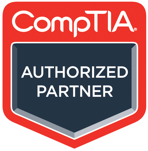Lesson 1: Comparing OSI Model Network Functions • Compare and Contrast OSI Model Layers • Configure SOHO Networks Lesson 2: Deploying Ethernet Cabling • Summarize Ethernet Standards • Summarize Copper Cabling Types • Summarize Fiber Optic Cabling Types • Deploy Ethernet Cabling Lesson 3: Deploying Ethernet Switching • Deploy Networking Devices • Explain Network Interfaces • Deploy Common Ethernet Switching Features Lesson 4: Troubleshooting Ethernet Networks • Explain Network Troubleshooting Methodology • Troubleshoot Common Cable Connectivity Issues Lesson 5: Explaining IPv4 Addressing • Explain IPv4 Addressing Schemes • Explain IPv4 Forwarding • Configure IP Networks and Subnets Lesson 6: Supporting IPv4 and IPv6 Networks • Use Appropriate Tools to Test IP Configuration • Troubleshoot IP Networks • Explain IPv6 Addressing Schemes Lesson 7: Configuring and Troubleshooting Routers • Compare and Contrast Routing Concepts • Compare and Contrast Dynamic Routing Concepts • Install and Troubleshoot Routers Lesson 8: Explaining Network Topologies and Types • Explain Network Types and Characteristics • Explain Tiered Switching Architecture • Explain Virtual LANs Lesson 9: Explaining Transport Layer Protocols • Compare and Contrast Transport Protocols • Use Appropriate Tools to Scan Network Ports Lesson 10: Explaining Network Services • Explain the Use of Network Addressing Services • Explain the Use of Name Resolution Services Lesson 11: Explaining Network Applications • Explain the Use of Web, File/Print, and Database Services • Explain the Use of Email and Voice Services Lesson 12: Ensuring Network Availability • Explain the Use of Network Management Services • Use Event Management to Ensure Network Availability • Use Performance Metrics to Ensure Network Availability Lesson 13: Explaining Common Security Concepts • Explain Common Security Concepts • Explain Authentication Methods Lesson 14: Supporting and Troubleshooting Secure Networks • Compare and Contrast Security Appliances • Troubleshoot Service and Security Issues Lesson 15: Deploying and Troubleshooting Wireless Networks • Summarize Wireless Standards • Install Wireless Networks • Troubleshoot Wireless Networks • Configure and Troubleshoot Wireless Security Lesson 16: Comparing WAN Links and Remote Access Methods • Explain WAN Provider Links • Compare and Contrast Remote Access Methods Lesson 17: Explaining Organizational and Physical Security Concepts • Explain Organizational Documentation and Policies • Explain Physical Security Methods • Compare and Contrast Internet of Things Devices Lesson 18: Explaining Disaster Recovery and High Availability Concepts • Explain Disaster Recovery Concepts • Explain High Availability Concepts Lesson 19: Applying Network Hardening Techniques • Compare and Contrast Types of Attacks • Apply Network Hardening Techniques Lesson 20: Summarizing Cloud and Datacenter Architecture • Summarize Cloud Concepts • Explain Virtualization and Storage Area Network Technologies • Explain Datacenter Network Architecture | 